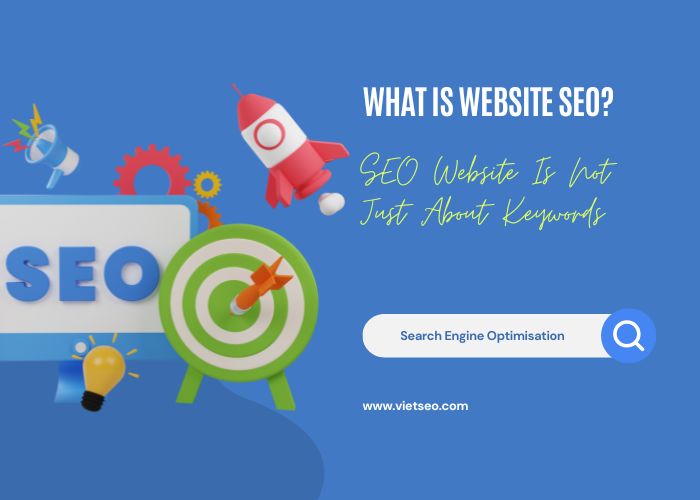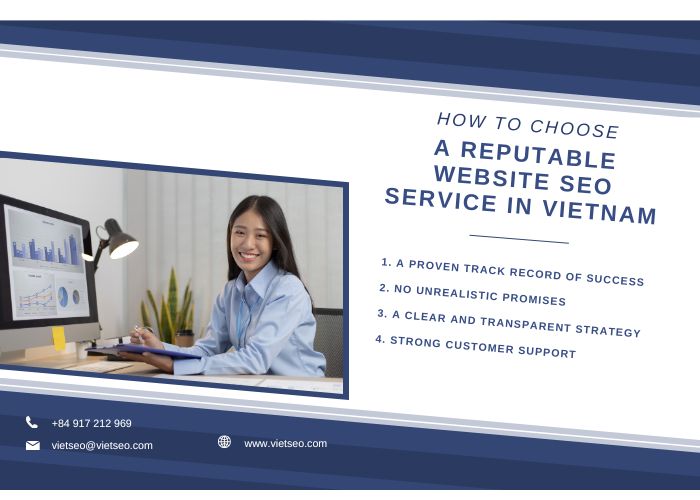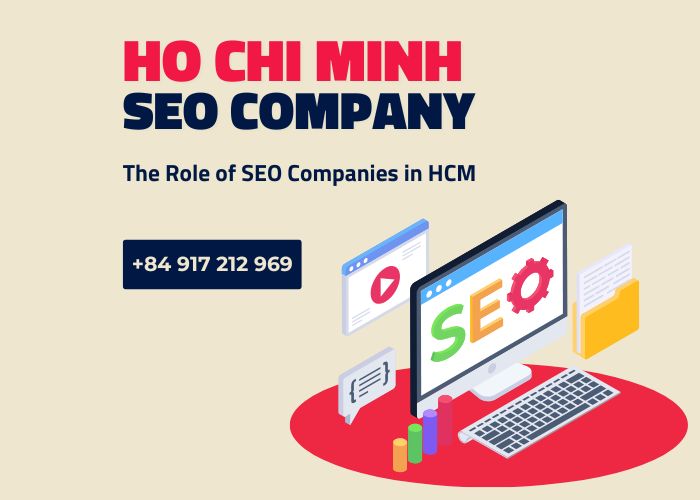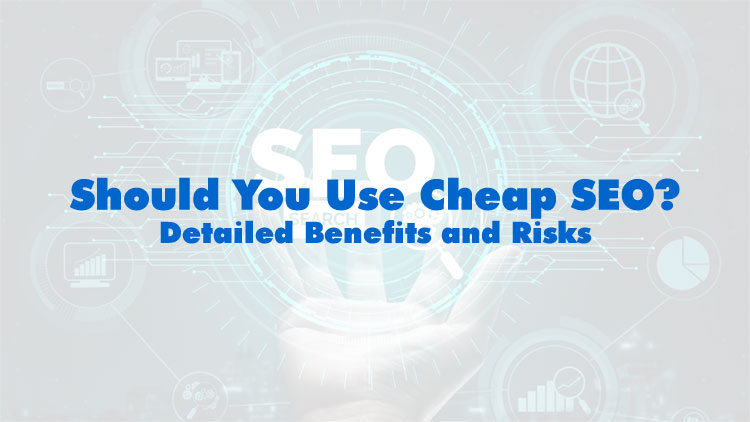What is Website SEO? Comparing SEO, SEM, and Google Ads
What Is Website SEO?
Website SEO, or Search Engine Optimization, is the process of making your entire website more attractive to search engines like Google. This doesn’t just mean adding keywords—it’s about improving every part of your site, from the content you publish, to the way your pages are structured, to the behind-the-scenes technical setup. The goal is simple: to help your website show up higher in search results when people are looking for products or services like yours.
Think of SEO as the digital equivalent of putting your shop on the busiest street in town. When your website ranks well in Google’s organic (unpaid) results, you don’t have to pay for every visitor, unlike advertising models such as Google Ads. Instead, SEO positions your website so that potential customers naturally find you through their own searches.
For example, imagine someone searches for “accounting services in Hanoi.” If your website appears in the top three results, you’re far more likely to get a click—and a new customer—than if your site were hidden on page two or three. That’s the power of SEO: it brings in the right audience, builds trust through visibility, and ultimately drives both brand awareness and revenue.
SEO Website Is Not Just About Keywords
A common misconception is that SEO only means “adding keywords” to your website. In reality, effective website SEO is much broader and involves a combination of different strategies that all work together to improve visibility and trust in search engines.
- On-page SEO – This covers everything you do directly on your website pages: writing valuable content, optimizing titles and meta descriptions, using H1–H6 headings correctly, improving your URL structure, adding internal links, and ensuring your pages load quickly.
- Off-page SEO – Beyond your site, you also need to build authority. This usually comes from high-quality backlinks (links from other trusted websites) that tell Google your site is credible.
- Technical SEO – The “behind-the-scenes” part of SEO. This includes making sure your website can be crawled and indexed properly, having a clean sitemap, using robots.txt correctly, switching to HTTPS for security, ensuring your site works well on mobile devices, and adding structured data (schema markup) to help search engines better understand your content.
- UX/UI and user experience – Google doesn’t just look at technical signals. A well-designed, user-friendly website keeps visitors engaged longer, reduces bounce rates, and sends positive signals that can boost your rankings.
In short, SEO is a long-term investment. It’s not something you set up once and forget. It requires patience, ongoing analysis, and constant updates to keep up with Google’s evolving algorithms. Done right, SEO becomes the foundation for sustainable growth, helping your business build visibility, trust, and long-term success online.
Distinguishing Website SEO and SEM
While both SEO (Search Engine Optimization) and SEM (Search Engine Marketing) aim to increase visibility on search engines, they use very different approaches. SEO focuses on improving organic rankings through content, technical optimization, and long-term strategy. SEM, on the other hand, combines SEO with paid advertising methods like Google Ads to achieve faster, but often short-term, results. Understanding the distinction helps businesses decide whether to invest in sustainable growth with SEO, immediate traffic through SEM, or a strategic mix of both.
| Criteria | Website SEO | SEM (including Google Ads) |
|---|---|---|
| Cost | Low long-term cost | Pay-per-click (PPC) |
| Impact | Slow growth but sustainable | Quick effect, disappears when off |
| Time to rank | Usually 3–6 months | Immediate once ads run |
| Credibility | Users often trust organic results more | Some users avoid paid ads |
| Strategy focus | Long-term, brand building | Short-term, conversion focused |
In summary: SEO is part of SEM, but not all SEM is SEO.
Distinguishing Website SEO and Google Ads
Although both aim to attract visitors from Google, Website SEO and Google Ads operate very differently. SEO builds long-term visibility by optimizing your site’s content, structure, and technical performance to appear in organic results. Google Ads, by contrast, delivers instant visibility at the top of search results through paid advertising. The key difference: SEO requires time and consistency but creates sustainable traffic, while Google Ads offers immediate exposure as long as you continue investing in ad spend.
| Criteria | Website SEO | Google Ads |
|---|---|---|
| Display type | No cost per click | Cost incurred per click |
| Position on search | Below ads, in organic results | Top of the page |
| Overall cost | High initial investment, saves over time | Ongoing budget required |
| Conversion rate | High if content is relevant | Immediate if targeting is accurate |
| When stopped | Website maintains position | Ads off = disappears completely |
Conclusion: Google Ads is a short-term solution - SEO is a sustainable path.
Benefits of Doing Website SEO
Investing in website SEO is far more than just tweaking content or trying to increase traffic numbers. At its core, SEO is a sustainable marketing strategy that allows businesses to strengthen their brand presence, reduce promotional costs, and build long-term revenue growth. When done properly, it becomes a foundation for digital success.
1. Attracting Consistent Organic Traffic
Unlike paid advertising, where visibility stops the moment you stop paying, SEO allows your website to earn traffic naturally. This traffic comes from people who are actively searching for your products or services, making them more likely to convert into leads or customers. Because they are driven by real intent—not forced ad impressions—organic visitors typically deliver higher conversion rates.
2. Saving on Long-Term Marketing Costs
In the beginning, SEO requires an upfront investment in content creation, technical improvements, and optimization. However, once your site achieves strong rankings, you don’t need to pay for every single click like with Google Ads. A well-ranked page can continue generating traffic for months or even years, creating an ongoing return on investment without the constant expense of ad campaigns.
3. Building Trust, Credibility, and Brand Awareness
Users instinctively trust organic results more than paid ads. When your website consistently appears on the first page for multiple relevant keywords, it signals authority and expertise in your field. Over time, this builds stronger brand recognition and trust, positioning your business as the go-to choice in your industry.
4. Gaining Insights Into Customer Behavior
SEO isn’t only about rankings—it also gives you data. By analyzing keyword trends, search queries, and user engagement, you gain a deeper understanding of what your audience really wants. This information can shape your product development, customer service approach, and marketing campaigns, ensuring your business stays aligned with customer needs.
5. Enhancing User Experience (UX)
Part of SEO involves improving how people experience your website. That means faster load times, clean navigation, mobile-friendly design, and a layout that encourages exploration. The better the user experience, the more likely visitors are to stay longer, view more pages, and take meaningful actions such as filling out a form, making a purchase, or contacting your team.
6. Creating a Long-Term Competitive Advantage
Competitors who rely heavily on ads are often stuck in a cycle of spending money every day just to stay visible. With SEO, you’re building a strong foundation that doesn’t disappear when the budget runs out. Once your site secures high-ranking positions—especially for niche or long-tail keywords—it becomes much harder for others to displace you, giving you a lasting competitive edge.
7. Supporting Flexible Business Growth
A strong SEO framework also makes it easier to expand. Whether you’re launching a new product line, targeting a local market, or creating timely content around emerging trends, you don’t need to start from zero. With SEO, your site already has authority and visibility, allowing new initiatives to gain traction faster and more effectively.
In Summary
Website SEO isn’t just a technical tactic—it’s a smart, forward-looking business strategy. By helping you reach the right people at the right time, SEO drives qualified traffic, reduces long-term costs, builds trust in your brand, and provides data-driven insights to grow your business. Most importantly, it offers something advertising alone can’t: sustainable, long-term profitability.
When Should You Do Website SEO?
SEO isn’t always the instant solution to every marketing problem. It takes time and consistency. However, in many cases, SEO is the foundation for building a strong brand and achieving sustainable growth. Below are the ideal situations when investing in SEO makes the most sense:
1. When You Want to Build a Long-Term Brand
SEO isn’t just about getting clicks — it’s about creating a lasting presence in the digital marketplace. When your website consistently ranks at the top of Google for industry-related keywords, customers start to recognize and remember you. This repeated visibility reinforces your authority, builds brand awareness, and establishes the trust that’s essential for converting visitors into loyal customers.
2. When Your Products or Services Have High Search Demand
If you’re in a field where customers actively search for solutions on Google — for example, travel, real estate, education, repair services, cosmetics, or healthcare — SEO is a must-have. Unlike banner ads or email campaigns that interrupt people, SEO positions you in front of potential customers exactly at the moment they’re looking for what you offer. This “intent-driven” exposure often translates into much higher conversion rates.
3. When You Don’t Want to Depend Solely on Paid Ads
Paid advertising like Google Ads or Facebook Ads can generate quick results, but costs are constantly rising. And the moment you stop running ads, your traffic vanishes. SEO works differently. Once your website is optimized and ranking well, it can continue to bring in steady traffic without ongoing ad spend. That means you reduce risk, diversify your traffic sources, and avoid being locked into a single platform.
4. When You Have a Stable Budget and Can Wait for Results
SEO takes patience. Depending on your industry and competition, it can take 3 to 6 months or more to see strong rankings. That’s why SEO is best suited for businesses that have a stable marketing budget, don’t need immediate sales, and are ready to invest in long-term growth. By laying the groundwork now, you build a strong foundation that pays dividends for years to come.
In summary: You should invest in SEO when you’re focused on sustainable growth, not quick wins. If your goal is to build brand authority, tap into consistent customer demand, reduce reliance on ads, and create a durable digital presence, SEO is the right move.
How to Choose a Reputable Website SEO Service in Vietnam
With so many SEO providers in the market today, it can be difficult to separate the trustworthy ones from those who make empty promises. Choosing the right partner is crucial, because the wrong SEO strategy can waste your budget — or even damage your website’s reputation. Here are the most important criteria to look for when selecting a reliable SEO service in Vietnam.
1. A Proven Track Record of Success
A reputable SEO company should be able to show concrete results from past projects. Don’t hesitate to ask for case studies, examples of keywords they’ve ranked successfully, traffic growth charts, or real performance reports. Past success is often the best indicator of their ability to deliver for you.
2. No Unrealistic Promises
Beware of agencies that guarantee “Top ranking in 7 days” or similar claims. SEO is a gradual, organic process that takes time. Shortcuts often involve “black hat” tactics, which may temporarily boost rankings but put your site at risk of severe penalties from Google. A trustworthy partner will set realistic expectations and focus on long-term growth.
3. A Clear and Transparent Strategy
A professional SEO provider won’t just say “we’ll get you results” — they will walk you through their approach. Look for a company that can explain each step of the process: keyword research, content development, on-page optimization, technical SEO, link building, and ongoing performance tracking. Transparency ensures you know exactly what you’re paying for.
4. Strong Customer Support
SEO is not a one-time job; it’s an ongoing partnership. That’s why good communication and customer support are essential. The right SEO agency should respond quickly, provide regular updates, and be proactive in solving problems — not treat you as just another client number.
Bottom line: A reliable SEO service in Vietnam is one that combines proven results, ethical practices, clear strategies, and responsive support. Choosing carefully now will save you time, money, and headaches later.
How Long Does It Take to Rank a Website with SEO?
One of the most common questions businesses ask is: “How long will it take for my website to rank on Google?” The truth is, there’s no one-size-fits-all answer. The timeline depends on several factors, including your industry, the level of competition, and the current condition of your website.
- Industry & Competition: Highly competitive industries such as real estate, finance, or e-commerce will naturally take longer to achieve top rankings compared to niche markets with fewer players.
- Website Condition: A well-structured, technically sound website with quality content will rank faster than a poorly optimized one that requires a complete overhaul.
Typical SEO Timelines:
- 3–6 months: Most websites start to see noticeable improvements in traffic and rankings within this timeframe.
- 6–12 months: For highly competitive or “main” keywords, it usually takes at least half a year to a year to achieve strong, stable rankings.
- 1–2 months: Long-tail keywords (specific, less competitive phrases) can often rank much faster, sometimes within just a few weeks to a couple of months.
In summary: SEO is a long-term investment. While you may see small wins early on, real, sustainable results usually take time. The key is consistency — continuing to optimize, publish valuable content, and adapt to Google’s algorithm updates.
Common SEO Mistakes for Websites in Vietnam
SEO is one of the most effective long-term marketing channels for businesses. Yet in Vietnam, many companies continue to repeat the same mistakes that either keep their websites stuck at low rankings—or worse, cause penalties from Google. If you want sustainable growth, avoid these five major pitfalls:
1. Prioritizing Quantity Over Content Quality
Many businesses still believe that “more articles = better SEO.” As a result, they churn out hundreds of outsourced blog posts filled with repetitive, thin, or irrelevant content. The problem is that Google’s algorithm values depth, usefulness, and originality, not sheer volume.
Publishing dozens of weak articles can actually hurt your authority, making your site look like it’s full of “thin content.” Instead, focus on fewer but higher-quality pieces that genuinely answer user questions and provide value.
2. Keyword Stuffing That Backfires
The days when you could cram a keyword into every sentence and rank higher are long gone. Google now understands search intent and context, and it punishes content that reads unnaturally.
For example, repeating “air conditioner repair service” 20 times in a 500-word article not only annoys readers but also triggers spam signals. A better approach is to use the main keyword naturally, mix in synonyms, and write in a way that flows for real people first.
3. Relying on Low-Quality Backlinks
Backlinks are still important, but quality matters far more than quantity. Unfortunately, some businesses in Vietnam still buy cheap backlinks from spammy forums, blog comments, or unrelated sites. This might provide a temporary boost, but it puts your site at risk of Google’s Penguin penalty.
The right strategy is to earn links from relevant, trustworthy websites in your niche. Guest posting, digital PR, and partnerships with credible sources are much safer (and more effective) long-term strategies.
4. Ignoring User Experience (UX/UI)
SEO today isn’t just about keywords—it’s also about how people experience your website. Google has confirmed that Core Web Vitals and overall UX are ranking factors. That means if your site is:
- Slow to load
- Hard to navigate
- Not mobile-friendly
…then even excellent content won’t save it. To succeed in SEO, your site must be fast, user-friendly, and designed to keep visitors engaged. Better UX doesn’t just help rankings—it also directly increases conversions.
5. Failing to Track and Update SEO Strategies
SEO is not “set and forget.” Many businesses make the mistake of launching SEO campaigns without tracking results. Without tools like Google Analytics and Search Console, you miss out on valuable insights: which pages perform best, which keywords are driving traffic, and where users drop off.
Search behavior changes constantly. If you don’t update your strategy—refreshing old content, adding trending keywords, improving site speed, and refining internal links—you’ll quickly fall behind competitors who do.
In summary: Successful SEO requires patience, strategy, and ongoing effort. By focusing on quality content, ethical link building, strong user experience, and continuous tracking, businesses in Vietnam can avoid these common mistakes and build a lasting digital presence.
Website SEO – A Smart Investment for Vietnamese Businesses
In today’s digital age, website SEO is no longer just a marketing trend — it has become the foundation for any business that wants to grow sustainably online. Whether you run a large corporation or a small local shop, SEO helps you appear in front of the right audience, at the exact moment they’re searching for your products or services. This not only drives qualified traffic but also reduces overall marketing costs and strengthens your brand presence over time.
For Vietnamese businesses, the decision to invest in SEO is a strategic one. With competition increasing across every industry, ranking well on Google is often the difference between being discovered by potential customers or being overlooked completely.
The first step toward success is choosing a reliable SEO provider in Vietnam. A trustworthy partner will guide you with a clear strategy, ethical methods, and measurable results. Done right, SEO becomes one of the smartest investments you can make — building visibility, credibility, and long-term revenue growth.




